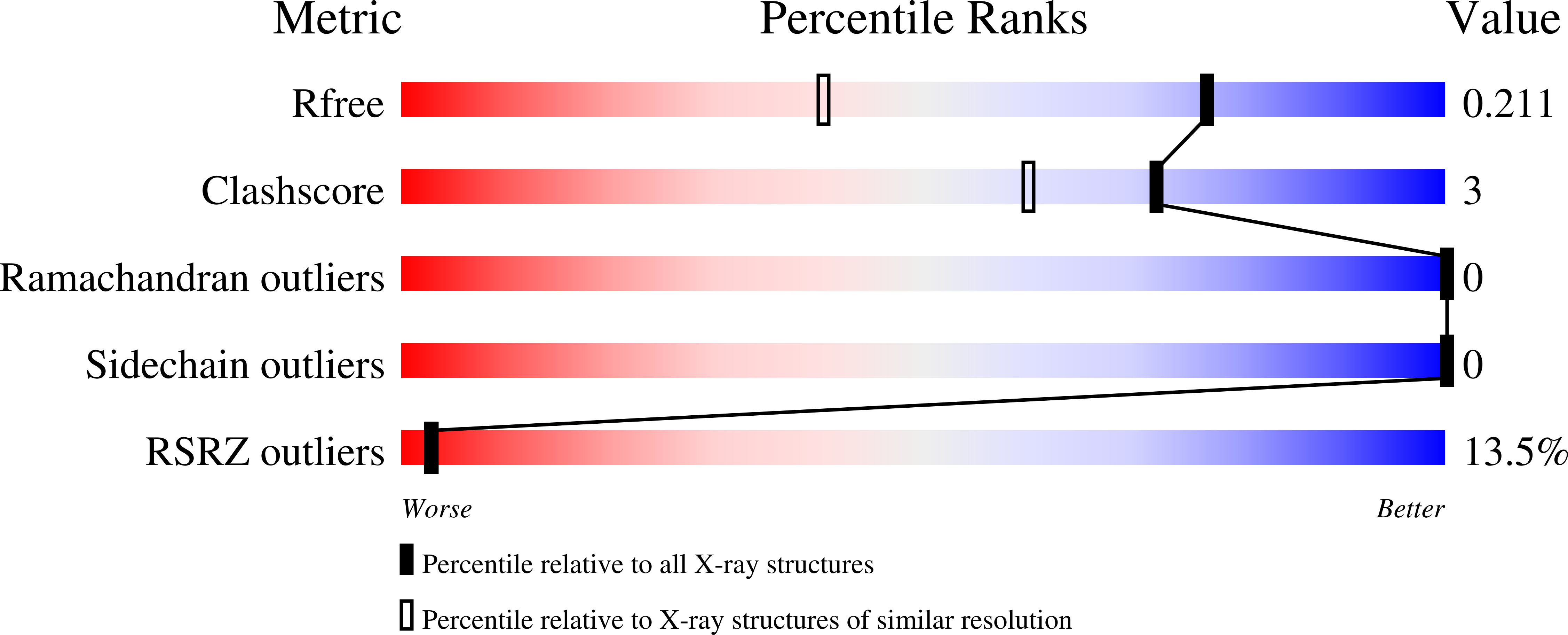Epoxyqueuosine Reductase QueH in the Biosynthetic Pathway to tRNA Queuosine Is a Unique Metalloenzyme.
Li, Q., Zallot, R., MacTavish, B.S., Montoya, A., Payan, D.J., Hu, Y., Gerlt, J.A., Angerhofer, A., de Crecy-Lagard, V., Bruner, S.D.(2021) Biochemistry 60: 3152-3161
- PubMed: 34652139
- DOI: https://doi.org/10.1021/acs.biochem.1c00164
- Primary Citation of Related Structures:
7LC5 - PubMed Abstract:
Queuosine is a structurally unique and functionally important tRNA modification, widely distributed in eukaryotes and bacteria. The final step of queuosine biosynthesis is the reduction/deoxygenation of epoxyqueuosine to form the cyclopentene motif of the nucleobase. The chemistry is performed by the structurally and functionally characterized cobalamin-dependent QueG. However, the queG gene is absent from several bacteria that otherwise retain queuosine biosynthesis machinery. Members of the IPR003828 family (previously known as DUF208) have been recently identified as nonorthologous replacements of QueG, and this family was renamed QueH. Here, we present the structural characterization of QueH from Thermotoga maritima . The structure reveals an unusual active site architecture with a [4Fe-4S] metallocluster along with an adjacent coordinated iron metal. The juxtaposition of the cofactor and coordinated metal ion predicts a unique mechanism for a two-electron reduction/deoxygenation of epoxyqueuosine. To support the structural characterization, in vitro biochemical and genomic analyses are presented. Overall, this work reveals new diversity in the chemistry of iron/sulfur-dependent enzymes and novel insight into the last step of this widely conserved tRNA modification.
Organizational Affiliation:
Department of Chemistry, University of Florida, Gainesville, Florida 32611, United States.



















